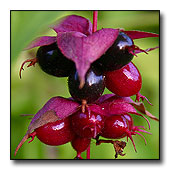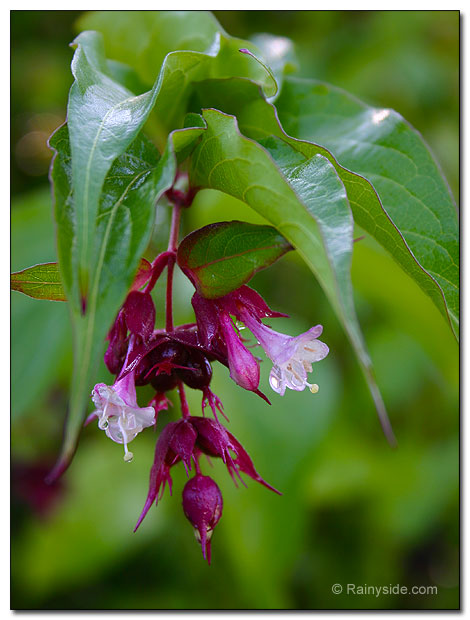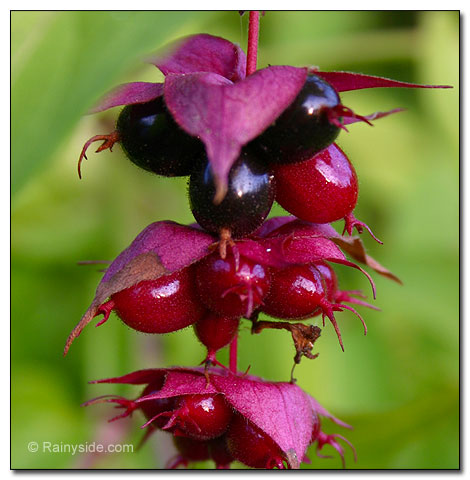Leycesteria formosa
HIMALAYAN HONEYSUCKLE, PHEASANT BERRY
Family: Caprifoliaceae
Pronounced: ley-ses-TER-ee-uh for-MOH-suh

Quick Jumps
Growing Guide
Rainy Side Notes
GROWING GUIDE

Origin:
Himalayans, western China.
Plant Group:
Shrubs.
Hardiness:
Sunset zones: 4-6, 14-17, 20-24.
USDA zones: 7-10.
Mature size:
Height: 6 feet (2 m).
Width: 6 feet (2 m).
Flowering period:
Summer into early autumn.
Flowering attributes:
Pendant spikes of deep red bracts with white, delicately scented flowers and red-purple berries.
Leaf attributes:
Ovate and tapered green leaves.
Growth habit:
Thicket forming.
Light:
Full sun to light to partial shade.
Soil:
Moist, well-drained, fertile soil.
Feeding:
Side dress with compost and add mulch in autumn. Fertilize with complete organic fertilizer in spring.
Propagation Methods:
Sow seed in containers 60-70°F (16-20°C ) and place in cold frame in Autumn.
Softwood cuttings in summer.
Divide in spring.
Pruning Methods:
In spring when buds begin to swell cut shrub back close to base, similiar to pruning Buddleja davidii.
Pests and Diseases:
I have not observed any problems with this plant.
Rainy Side Notes

Leycesteria formosa really draws in the wildlife. The hummingbirds go wild over it and animals and birds eat the berries. I have not tasted the berries but they are supposedly edible and have a bitter taste. The hollow stems can be used to make whistles and flutes.
If the temperature dips below 12°F (-10°C), stems are likely to be killed to the ground. The plant is a fast grower and will quickly spring back to original height during the growing season. Good mulch is necessary to protect roots from cold temperatures. It may seed about in your garden. In its native haunts, leycesterias prefer a woodland type setting. Here in the Pacific Northwest it prefers full sun.
Photographed in author's garden.

Gardening for the Homebrewer: Grow and Process Plants for Making Beer, Wine, Gruit, Cider, Perry, and More
By co-authors Debbie Teashon (Rainy Side Gardeners) and Wendy Tweton

